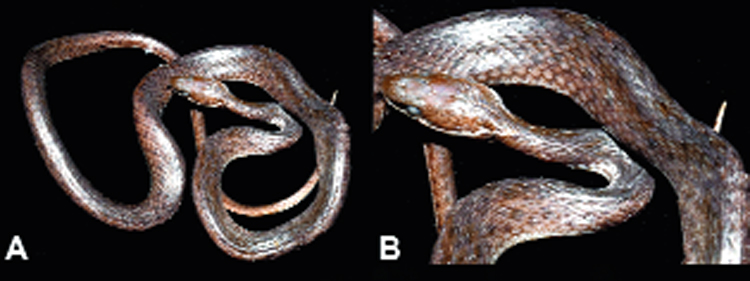The black spot below its eyes makes it seem as if it is crying.
A new snake species has been discovered in Arunachal Pradesh which has been named Hebius lacrima and the common name has been given as Crying Keelback (lacrima means crying).
The species has been discovered by Jayaditya Purkayastha of Help Earth, Guwahati and Partick David of Muséum National d’Histoire Naturelle, Paris. The discovery will be published in the Zootaxa journal soon. Help Earth, an NGO, has been actively involved in turtle conservation.
The snake is from the genus Hebius and was found in Basar town of West Siang district of Arunachal Pradesh. A genus is a taxonomic rank used in biological classification of living and fossil organisms in biology. In the hierarchy of biological classification, genus comes above species and below family.
The single known specimen was obtained from a rice field alongside a hill slope on the outskirts of the Basar in a heavily disturbed area. A small stream flows adjacent to this field. An indigenous agricultural practice called jhum (shifting) cultivation is practised in the hills adjacent to the rice field. The species was collected by a villager, preserved in concentrated formalin and given to Purkayastha in 2010.
There are 3,709 species of snakes globally. Northeast India is home to around 110 species of snakes with Arunachal Pradesh accounting for 55 of them. The genus Hebius is a part of the Amphiesma complex. The genus Hebius is represented by 44 species worldwide, out of which six species are from the Northeast.
Although only a single specimen of this species is available, by its sole external morphology, it differs from all known species of these genera.
Hebius lacrima can be differentiated from all other species of the genus Hebius by the combination of a distinctive broad, white, interrupted stripe on the supralabials, each side with three rows of irregular dark blotches, not vertically aligned, a short dorsolateral row made of a total of six cream, elongate spots on its anterior part, and the first dorsal scale row being entirely smooth.
“We are working on many new species of amphibians and reptiles right now and look forward for them to get published by the middle of this year. There is a lot of scope in research pertaining to herpeto fauna in the Northeast but we need support from government bodies. One of the most important constraints we face is lack of funds and so many potential contributors in this field have to migrate to other fields for sustenance. Thus this field of science (herpetology) in the Northeast is worked upon by a handful of researchers,” Purkayastha told The Telegraph.











